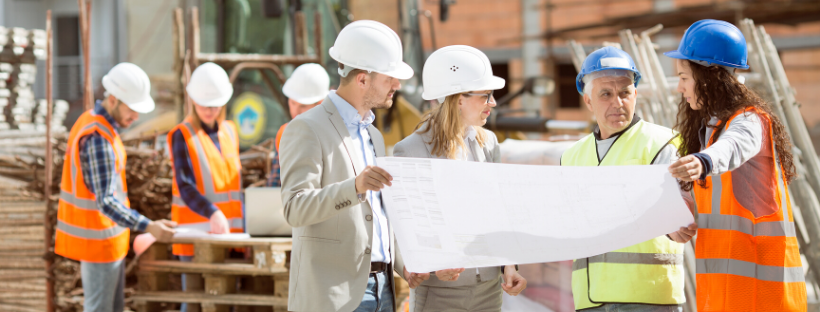8 Imperatives of Covid19 on Construction Industry in India (Part 2 of 2)


Post my Part 1 post, I am overwhelmed by the response I received from many professional associates & well-wishers both on my blog, Linkedin and Whatsapp posts. There is a common thread running through all reactions expressing their deep concern on the changes that may happen to our industry, the plight of construction workers & need for a more humane & inclusive approach and above all, a sense of optimism from everyone from different paths of our profession.
Lets continue on the changes I foresee in the construction industry..
5. Re-design of work spaces

One of the biggest impacts of the safe distance & quarantining that we have now come to accept is the awareness of need for keeping minimum standard space between workstations & team members. Companies and co-working spaces alike have been in the race to reduce the square feet per seat metric from about 100+ sft per person when I first started working to averaging it out to about 50 to 70 sft for a luxurious office space to the 35 to 50 sft per seat that has become the norm for most BPOs and co-working spaces.
This extreme crowding, while bringing down the cost of operations, has brought in unwanted proximity to working professionals thereby increasing risk of disease spreading. A re-look at this over emphasis on squeezing every bit of space in the race for lowest per seat carpet area, which would also encourage significant work from home reductions as well as comfortable seating & meeting spaces. Turning the clock back so to speak, would go a long way in not only reducing the heavy usage of air-conditioning systems, lighting & other infrastructure which not only directly or indirectly burden the utility infrastructure but also adds to the density of population being over the roof in some areas & lower population in other areas which are also causes for traffic, stress and other socio-economic problems that are plaguing most metros of the country.
A 20% reduction in seating would result in about 15% reduction in utility bills not to mention reduced dry & wet waste generation, collection & disposal and many other tangible & intangible benefits. Some companies have already announced their plans to have WFH & social distancing as a standard operating procedure in re-designing their work spaces which may disrupt the current practices & open gates for fresh thinking in the segment.
6. Questioning the Status-Quo

Now that we have attempted WFH with many lessons learned, I am wondering about some of most basic assumptions about necessity of office space & its design, functionality vs grandiosity, economy vs comfort & well-being of employees and other divergent topics for which there is no direct or real answer. I believe an attempt has to be made to question the basic assumptions that we make while constructing a facility viz-a-viz must haves vs good to have or trophy facilities in a built environment.
We may be on the threshold of a new world order where only those basic functions that have to be done from a fixed office space be done from there – like those requiring physical check & verification, confidentiality & security of data & information, lab facilities to name a few and rest all activities in construction industry would all be attempted to virtualise meaning could be done from anywhere.
New methods of doing the old processes may emerge & technology may play a much bigger role than what it is now as our industry has always been known to be a laggard when it comes to technology adaptation. Perhaps the time is now to play catch up with our more advanced peers from other industries & demand our cut of their attention to automation, remote working & collaborative practices. Already I am receiving mails from young startups offering solutions in the current context & it may increase.
7. Emergence of Gig Workers in Construction Sector

All these changes may converge on to need for pay by skill or deliverable kind of culture that is so common place in developed countries wherein everyone is an independent contractor so to speak who will get engaged in several tasks & processes for multiple agencies / companies during the course of normal work day & gets remunerated for the pre-agreed tasks / results produced rather than our conventional long term employee-employer model that has stood the test of time for centuries now.
Already some form of freelancing exists in our industry, however this will get accelerated to include all tasks or functions that do not require direct oversight of the immediate supervisor or those that may or may not have stringent timelines (works both ways). This arrangement would also work well with companies in our industry – be it design house, consultancy firm, contracting company or a supplier who is intending to make a mark in the industry – who all would explore possibilities of on-call or flexible need-based services with each ‘project’ or ‘assignment’ lasting from several hours to days or weeks. This would also help companies in rapid scale-up or down as per need without the accompanying social impacts.
Already we are seeing examples of this in our everyday life be it – Uber or Swiggy or Dunzo or DriveUin Indian context who represent the company but do not have any employee-employer relationship but both carry certain roles & obligations for each other. Barring creative work, given the knowledge-based process & methodology driven work that many of us do (either empirical or provisions of codes of practice), this may be the big disruption that might be waiting to happen post Covid-19.
8. Virtual web-based training & convergence of knowledge

We are seeing emergence of many online programs, webinars & talks pertaining to our industry (they have existed for some time now in other industries) and this may consolidate. Further, the training efforts of non-profits & industry bodies like INSTRUCT, ACCE(I), ICI, SEWC, RMCMA, CCMA, IPA, ECI and the likes may converge and work from a single web platform that could be shared by all in a plug & play manner with each organisation delivering their own training specific to their interest groups.
This would not only mean drastic reduction in the fee for the courses (as I reckon the cost of infrastructure, location, refreshments etc would account for more than 50% of the fee charged for the regular classes) but also see an exponential increase in the number of attendees as they get the benefit of training from the comfort of their home or wherever.
This is still some way to go as firstly, the infrastructure or platform for providing this is not there, the existing trainers are not tech-savvy and come with brick & mortar background (literally & figuratively) which need to be addressed by training the trainers first in the nuances of web-based teaching.
Secondly, these NGOs need to put their differences aside or rather align their objectives to work towards a common web-based approach keeping the interests of the current construction workforce who are all tech & mobile savvy and moved on from the text book & classroom-based training that was the order of the day during our times.
Whatever it is, one thing is certain to me. The world & the industry that we know today will never be the same again and it is time for all of us to put our thinking hats & do our bit to improve our lot in these challenging & testing times!
Hope all of you are staying home & safe!
Working From Home,
Madhukar
South Bengaluru